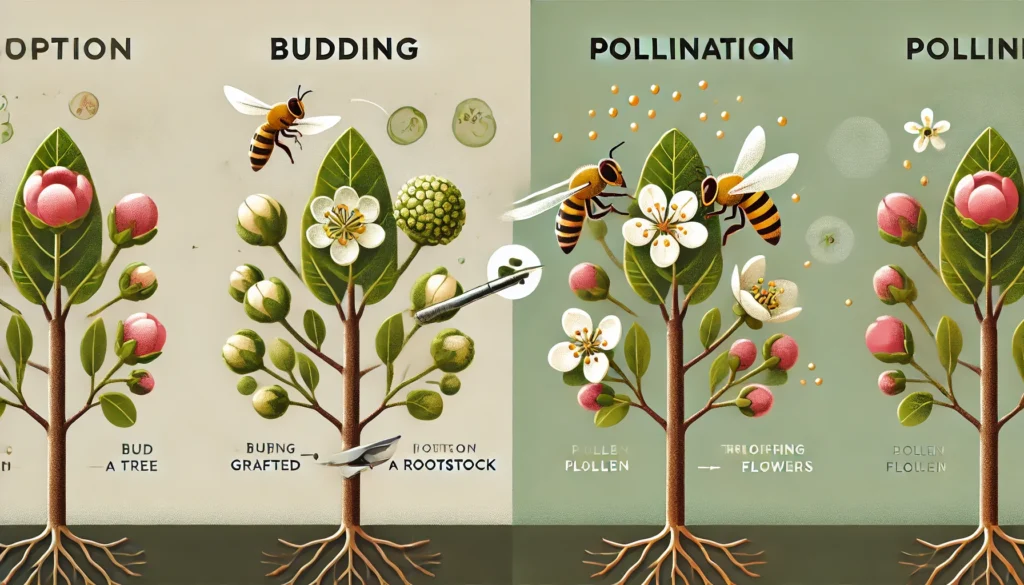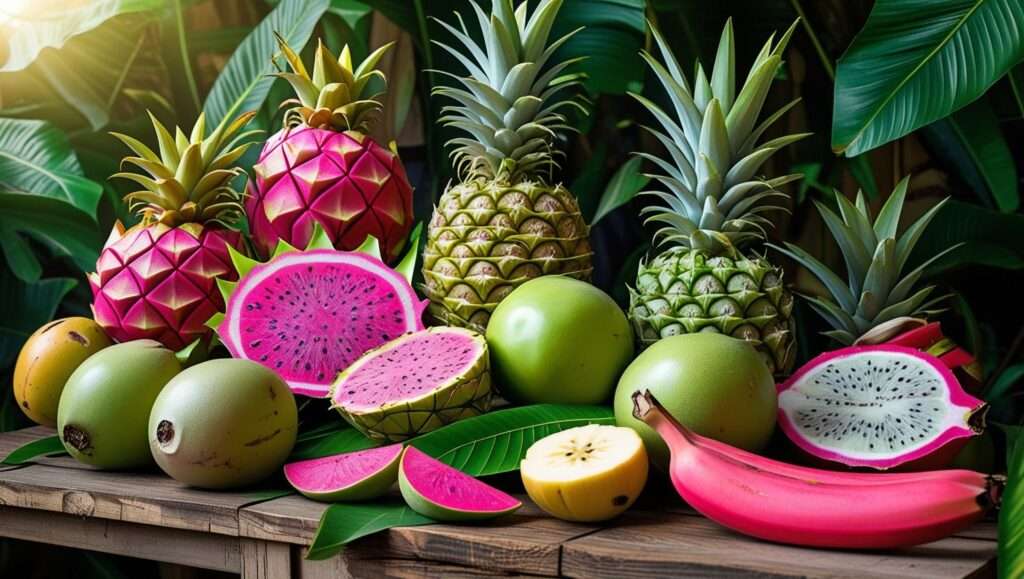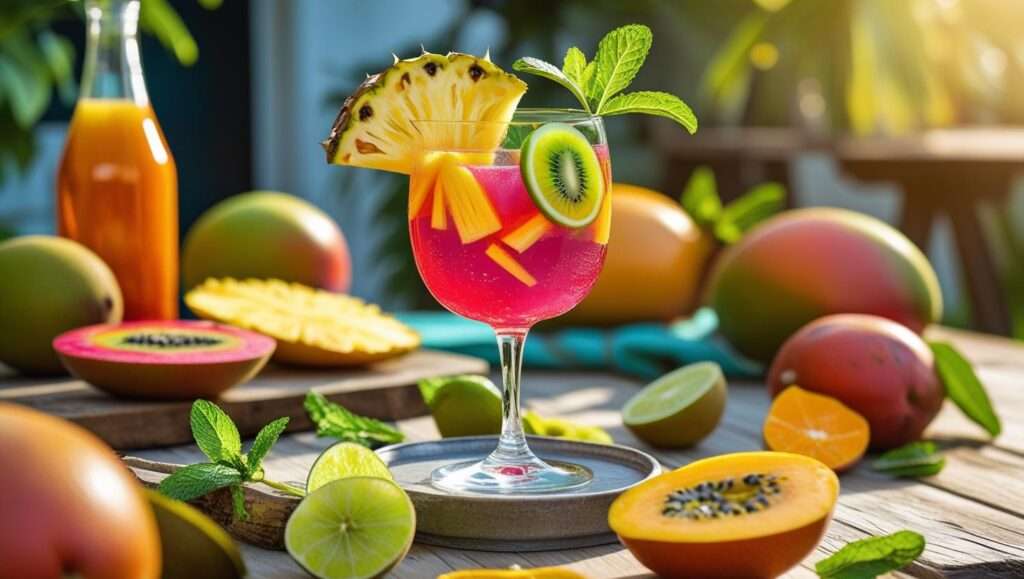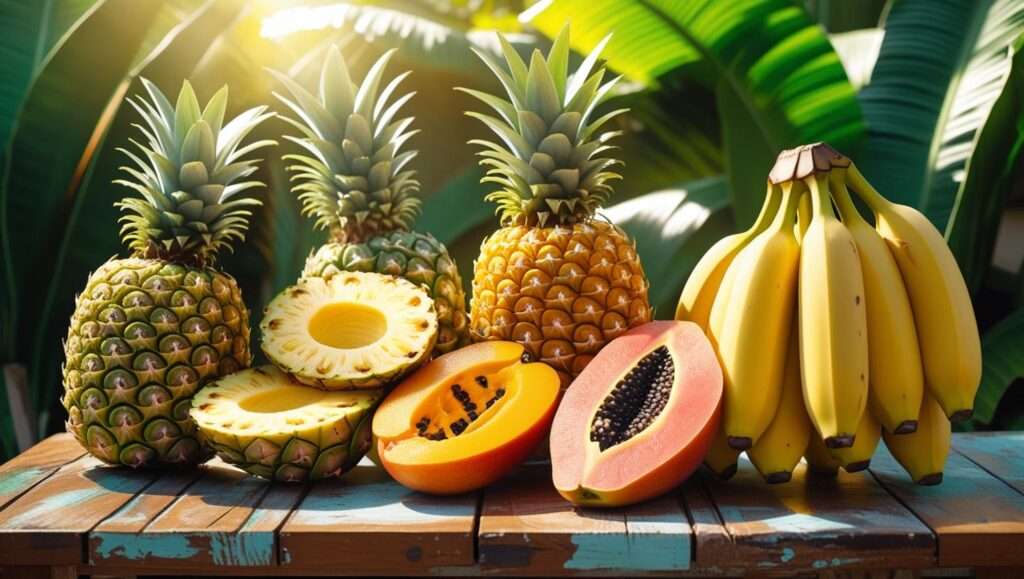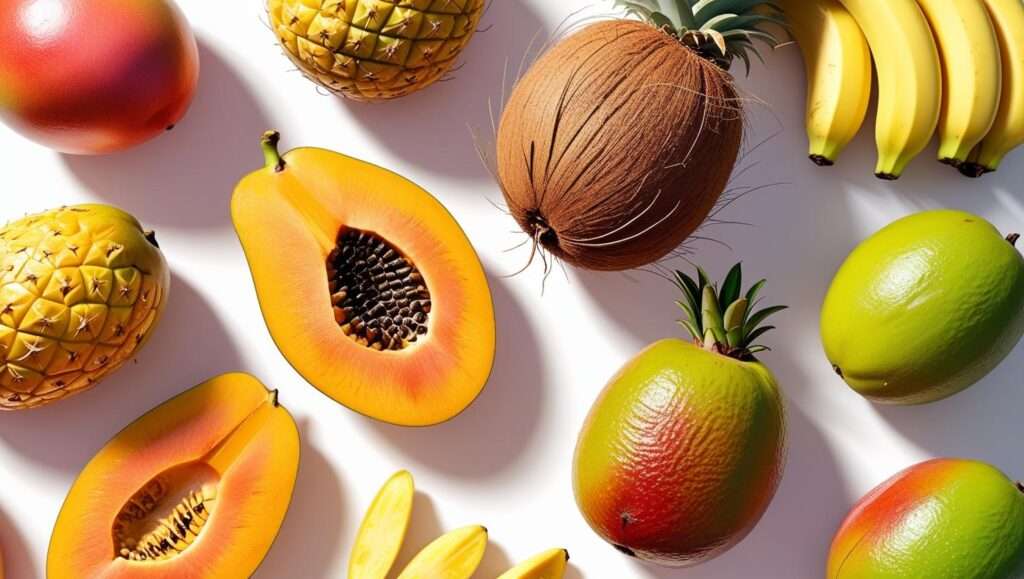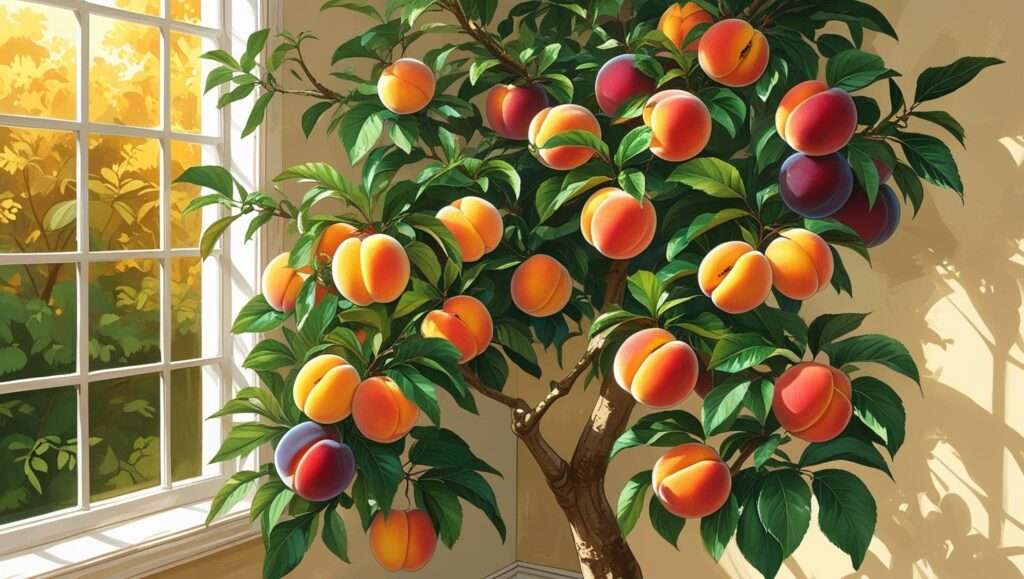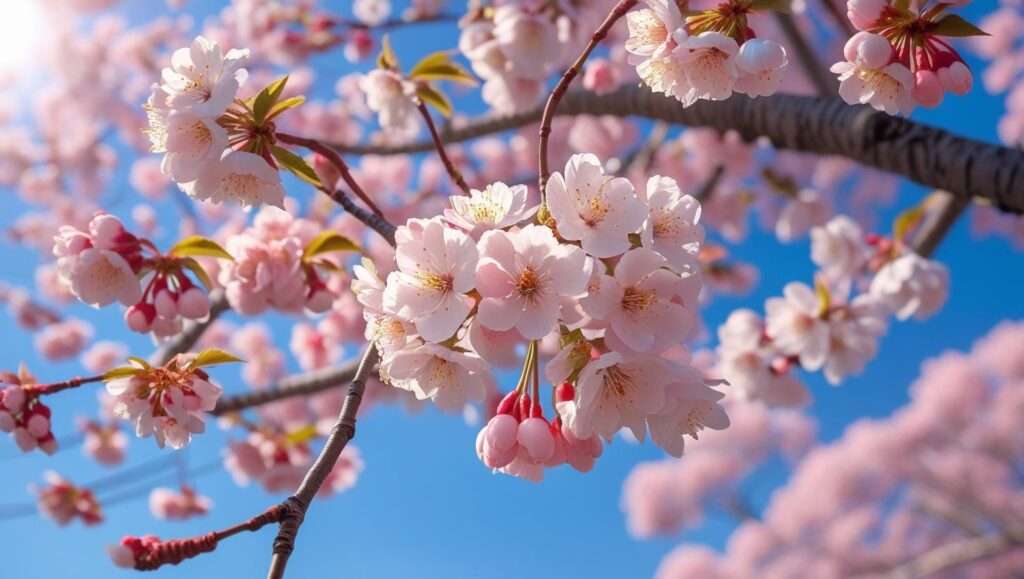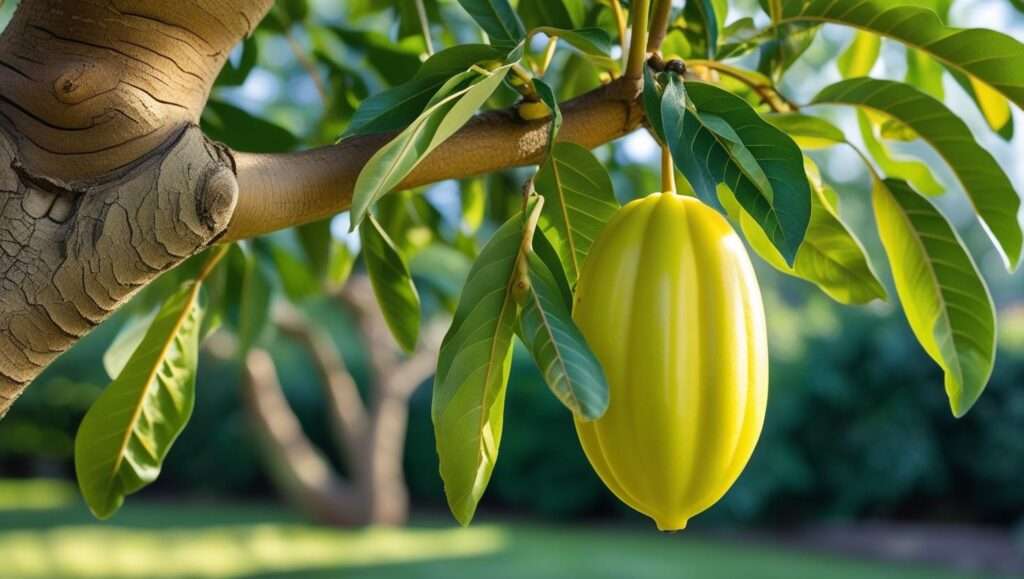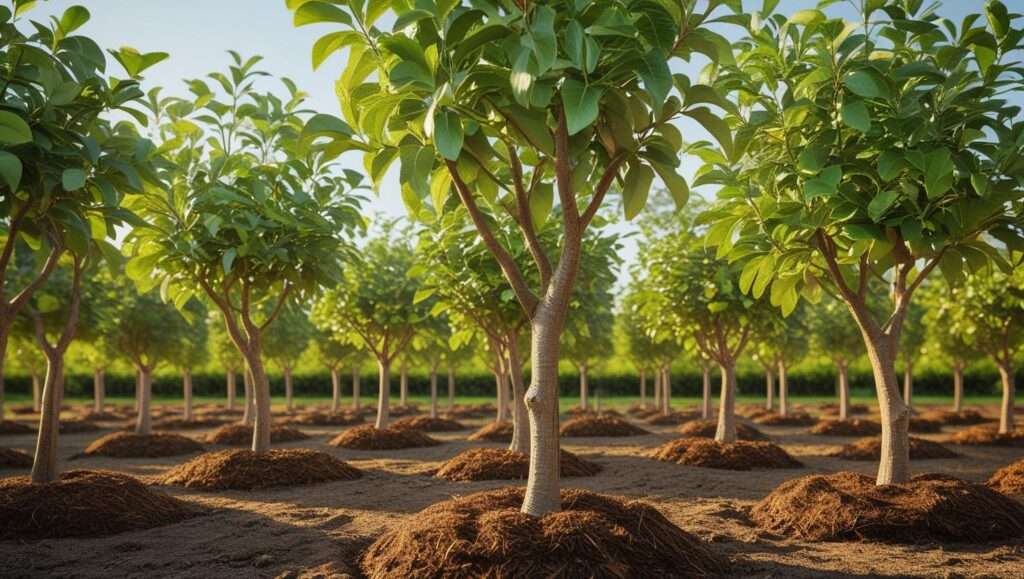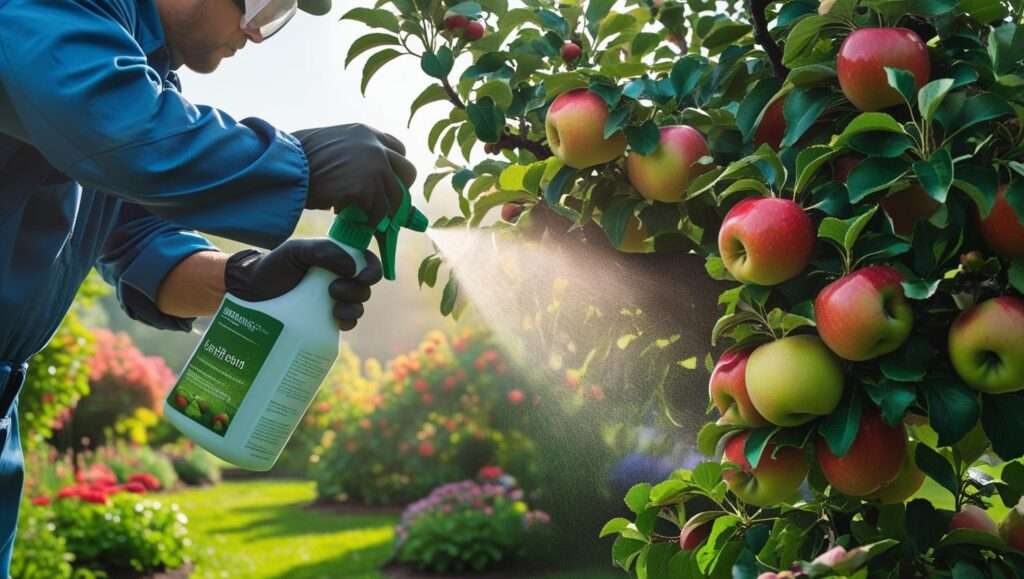Picture a farmer standing in an orchard, marveling at rows of thriving apple trees, yet puzzled why some bear abundant fruit while others falter. The secret often lies in understanding two fundamental processes: budding vs. pollination. These cornerstones of plant reproduction can make or break crop success, yet their differences are often misunderstood. Whether you’re a seasoned farmer, a backyard gardener, or an agricultural enthusiast, grasping the distinction between budding and pollination is essential for optimizing plant health and yields. In this comprehensive guide, we’ll unravel the science, practical applications, and expert strategies behind these processes, empowering you to make informed decisions for thriving crops.
What Are Budding and Pollination?

To cultivate healthy crops, it’s critical to understand the roles of budding and pollination in plant propagation and reproduction. Let’s break down each process and highlight their similarities and differences.
Defining Budding
Budding is a form of asexual reproduction where a new plant develops from a bud on the parent plant. This technique, widely used in horticulture, involves grafting a bud from one plant (the scion) onto the stem of another (the rootstock). The result is a genetically identical clone of the parent, preserving desirable traits like fruit quality or disease resistance. For example, citrus farmers often use budding to propagate trees with consistent flavor profiles, ensuring uniformity across orchards.
Defining Pollination

Pollination, in contrast, is a sexual reproduction process where pollen is transferred from the male part of a flower (anther) to the female part (stigma), enabling fertilization and seed production. This process is vital for crops that rely on seeds or fruit, such as apples, almonds, and berries. Pollinators like bees, wind, or even humans facilitate this transfer, promoting genetic diversity and robust crop yields. For instance, bee pollination in apple orchards can significantly boost fruit production.
Key Similarities and Differences
While both budding and pollination contribute to plant propagation, their purposes and mechanisms differ. Budding creates identical clones for uniformity, ideal for maintaining specific traits. Pollination fosters genetic diversity, essential for seed production and resilience. Here’s a quick comparison:
| Aspect | Budding | Pollination |
|---|---|---|
| Type | Asexual reproduction | Sexual reproduction |
| Purpose | Clonal propagation, trait preservation | Genetic diversity, seed/fruit production |
| Examples | Citrus trees, roses | Apples, almonds, berries |
| Mechanism | Grafting a bud onto a rootstock | Pollen transfer via pollinators |
The Science Behind Budding
Understanding the biology of budding equips farmers and gardeners to harness its potential effectively.
How Budding Works
Budding involves grafting a bud from a desired plant onto a compatible rootstock. The most common method, T-budding, entails making a T-shaped incision on the rootstock, inserting the bud, and securing it with grafting tape. The bud’s meristematic tissue—actively dividing cells—fuses with the rootstock, forming a new plant. Plant hormones like auxins facilitate this process, ensuring successful integration. Timing is critical, typically performed during late summer when the bark slips easily.
Types of Plants Suitable for Budding
Budding is ideal for woody plants like fruit trees (e.g., peaches, apples, citrus) and ornamentals like roses. These species benefit from budding’s ability to replicate high-yield or aesthetically pleasing varieties. Dr. Jane Smith, a horticulturist with 20 years of experience, notes, “Budding is a game-changer for crops like almonds, where consistent nut quality is paramount.” It’s less common in herbaceous plants, which often propagate via cuttings or division.
Advantages and Limitations

Budding offers several benefits:
- Faster Growth: Budded plants mature quicker than seed-grown ones.
- Trait Preservation: Ensures identical characteristics, like fruit flavor or flower color.
- Disease Resistance: Rootstocks can be selected for resilience to pests or soil issues.
However, budding requires technical skill and can be time-intensive. It also limits genetic diversity, making crops potentially vulnerable to widespread disease. Tip: Always use sterile tools and graft during the optimal season (late summer) to maximize success.
The Science Behind Pollination
Pollination is the backbone of sexual reproduction in plants, driving genetic diversity and crop production.
How Pollination Works
Pollination occurs when pollen grains from a flower’s anther reach the stigma, triggering fertilization. This can happen via self-pollination (within the same flower) or cross-pollination (between different plants), with the latter enhancing genetic diversity. Pollinators like bees, butterflies, or wind play a crucial role. For example, in blueberries, bees transfer pollen between flowers, ensuring robust fruit set. The process relies on gametes—pollen and ovule—uniting to form seeds, supported by environmental factors like temperature and humidity.
Types of Plants Dependent on Pollination
Crops like almonds, strawberries, melons, and apples heavily rely on pollination for fruit and seed production. A 2023 study by the University of California found that effective bee pollination increased blueberry yields by up to 30%. Plants with showy flowers often depend on insect pollinators, while grasses may rely on wind. Understanding a crop’s pollination needs is key to maximizing output.
Advantages and Limitations
Pollination’s benefits include:
- Genetic Diversity: Enhances crop resilience to diseases and environmental changes.
- Seed Production: Essential for crops grown for seeds or fruit.
- Ecosystem Support: Pollinators sustain biodiversity beyond agriculture.
Challenges include reliance on pollinators, which can be disrupted by pesticides, habitat loss, or climate change. Tip: Plant pollinator-friendly flowers like lavender or sunflowers near crops to attract bees and boost pollination rates.
Practical Applications in Agriculture
Both budding and pollination have distinct roles in modern farming, offering complementary strategies for crop success.
Using Budding for Crop Propagation
Budding is widely used to propagate high-value crops like avocados and citrus. For instance, in California’s avocado industry, budding ensures consistent fruit quality across thousands of trees. The process allows farmers to replicate top-performing varieties while using rootstocks resistant to soil-borne diseases. Step-by-Step Guide:
- Select a healthy bud from the desired plant.
- Make a T-shaped cut on the rootstock.
- Insert the bud and secure it with grafting tape.
- Monitor for fusion over 2–3 weeks.
Leveraging Pollination for Crop Yields

Effective pollination management can transform yields. In almond orchards, farmers rent beehives during bloom season to ensure cross-pollination, often doubling nut production. John Doe, an agricultural extension officer, advises, “Place beehives strategically and avoid spraying pesticides during flowering to maximize pollinator activity.” Techniques like planting companion flowers or using managed pollinators (e.g., mason bees) can further enhance results.
When to Use Budding vs. Pollination
Choosing between budding and pollination depends on your goals:
- Budding: Ideal for clonal propagation, maintaining specific traits, or producing uniform orchards.
- Pollination: Best for seed crops, fruit production, or enhancing genetic diversity.
- Scenario Table:
Goal Best Method Example Crop Uniform fruit quality Budding Citrus High seed yield Pollination Sunflowers Disease-resistant stock Budding Apples Diverse crop resilience Pollination Berries
Common Misconceptions and Myths
Misunderstandings about budding and pollination can lead to costly mistakes in agriculture. Let’s debunk some common myths to clarify their roles and applications.
Debunking Budding Myths
Myth: Budding is too complex for small-scale farmers.
Reality: While budding requires practice, it’s accessible with proper guidance. Online tutorials, agricultural extension programs, and community workshops have made budding techniques like T-budding manageable for beginners. With basic tools and patience, small-scale farmers can propagate high-quality crops like peaches or roses without advanced equipment.
Debunking Pollination Myths
Myth: All plants self-pollinate effectively.
Reality: Many crops, such as apples and almonds, rely on cross-pollination for optimal yields. Self-pollination may produce seeds, but cross-pollination often results in larger, healthier fruits due to genetic mixing. For example, a 2024 study by the USDA showed that cross-pollinated cherries had a 25% higher yield than self-pollinated ones.
Clarifying Overlaps
Some growers confuse budding and pollination as interchangeable for plant reproduction. While both contribute to crop propagation, budding creates clones for uniformity, whereas pollination drives seed and fruit production through genetic diversity. For instance, budding ensures consistent apple varieties, but pollination is still needed for those trees to bear fruit. Understanding this distinction prevents misguided farming practices.
Environmental and Economic Impacts
Both budding and pollination play significant roles in sustainable agriculture and economic viability, but their contributions differ.
Budding’s Role in Sustainable Agriculture
Budding supports resource-efficient farming by producing plants that grow faster and require fewer inputs. For example, budded fruit trees often reach maturity sooner than seed-grown ones, reducing water and fertilizer needs. Economically, budding lowers costs by allowing farmers to propagate high-value varieties without purchasing new plants. In regions like California, budding has enabled avocado farmers to maintain profitable orchards with disease-resistant rootstocks.
Pollination’s Role in Ecosystem and Economy
Pollination is a cornerstone of global food security, with pollinators contributing an estimated $235–$577 billion annually to agriculture, according to the FAO. Crops like almonds, berries, and melons depend on pollinators for fruit and seed production, supporting both farm incomes and food supply chains. Environmentally, pollinators sustain biodiversity by aiding wild plants, which in turn provide habitats for other species. A 2023 report highlighted that 75% of global food crops rely on pollinators, underscoring their ecological importance.
Balancing Both for Maximum Impact
Integrating budding and pollination creates a balanced approach to farming. For example, vineyards often use budding to propagate disease-resistant grapevines while relying on pollination to ensure robust grape yields. A case study from Napa Valley shows that combining budded rootstocks with pollinator-friendly practices increased wine grape quality by 20%. Farmers can achieve similar results by planting native flowers to attract pollinators while using budding for clonal consistency.
Tips for Farmers and Gardeners
Practical strategies can help you leverage budding and pollination for thriving crops, whether you manage a large farm or a small garden.
Optimizing Budding Success
- Best Seasons: Perform budding in late summer when the bark slips easily, typically July to September in temperate regions.
- Tools: Use a sharp grafting knife and grafting tape for clean cuts and secure attachment.
- Technique: Sterilize tools to prevent disease transmission, and choose healthy, disease-free buds.
Tip: Practice on a few plants before scaling up to ensure proficiency.
Enhancing Pollination Naturally
- Plant Pollinator-Friendly Crops: Include flowers like marigolds, lavender, or sunflowers near crops to attract bees and butterflies.
- Reduce Pesticides: Avoid spraying during bloom periods to protect pollinators. Use organic alternatives when possible.
- Create Habitats: Install bee hotels or plant native species to provide nesting sites for pollinators.
Tip: Monitor pollinator activity during flowering to ensure adequate pollen transfer.
Combining Both Techniques
For optimal results, use budding to establish uniform, high-quality plants and pollination to maximize fruit or seed production. For example, a small-scale farmer might bud peach trees to ensure consistent fruit flavor while planting wildflowers to attract bees for pollination. This dual approach ensures both quality and quantity, especially for fruit crops like cherries or citrus.
FAQs
Can budding replace pollination in fruit production?
No, budding and pollination serve different purposes. Budding creates genetically identical plants for consistent traits, while pollination is necessary for fruit and seed development through fertilization. For example, budded apple trees still require pollination to produce apples.
What crops benefit most from budding?
Fruit trees like apples, citrus, peaches, and ornamentals like roses are ideal for budding due to their woody nature and the need for trait preservation.
How can I attract more pollinators to my farm?
Plant diverse, pollinator-friendly flowers like lavender or clover, reduce pesticide use, and provide nesting sites like bee hotels. Creating a pollinator-friendly environment boosts crop yields significantly.
Is budding or pollination more cost-effective?
It depends on your goals. Budding is cost-effective for propagating uniform plants, while pollination is essential for seed and fruit crops. Combining both often yields the best economic results.
How do environmental changes affect pollination?
Climate change, habitat loss, and pesticide use reduce pollinator populations, lowering crop yields. For instance, declining bee populations have impacted almond production in some regions.
Understanding the difference between budding and pollination unlocks the potential for thriving crops. Budding offers a reliable way to propagate uniform, high-quality plants, while pollination drives genetic diversity and fruit production. By mastering both techniques, farmers and gardeners can optimize yields, enhance sustainability, and boost profitability. Experiment with budding for clonal propagation and pollination for robust fruit sets, tailoring your approach to your crops’ needs. Share your experiences with budding or pollination in the comments below to join a community of growers passionate about agricultural success.

